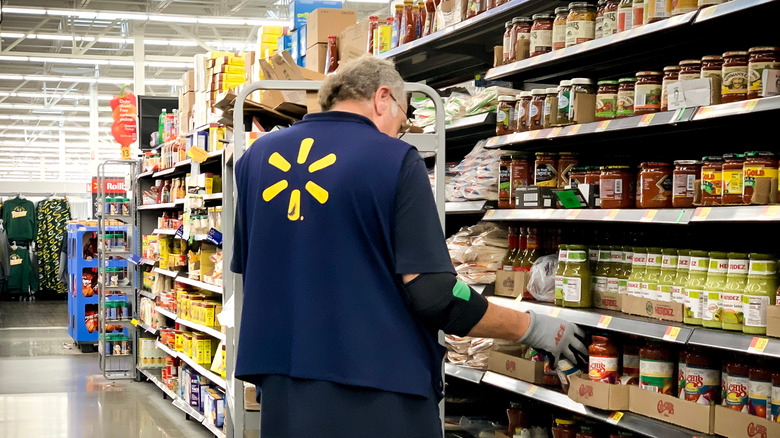The Real Reason Walmart And Sam's Club Are Struggling Financially
Walmart was one of the few businesses that thrived at the beginning of the coronavirus pandemic in 2020. The notoriously affordable store was the perfect place for people to stock up on necessities, growing online sales by a whopping 74% and overall sales by 9% between February and April of 2020 (via The Washington Post). While other stores were filing for bankruptcy and shutting down, Walmart hired an additional 235,000 workers to keep up with demand.
Everyone was running to the store to stock up on toilet paper and hand sanitizer at the beginning of the pandemic, but as the stay-at-home orders lasted much longer than anyone anticipated, people began buying items outside of necessities to keep them busy at home. Stores with a "diverse mix of merchandise" like Target and Walmart allowed people to get everything they needed in one store, which was a safer and more convenient way to shop (via CNBC). Fast forward to the present day where these big box stores are now facing historic inflation and are struggling to adjust to keep profits where they once were.
Supply chain issues, overstaffing, and selling less general merchandise are to blame
When stores that thrived during a historic pandemic, like Walmart and Sam's Club, are struggling financially, that's when you know things are really bad. Inflation is higher than it has ever been in the past 40 years, and everyday consumers and huge corporations alike are feeling the effects (via NBC). On Tuesday, May 17, Walmart reported that first-quarter profits decreased by 24% compared to last year (via Northwest Arkansas Democrat-Gazette).
Many would think this would be due to a decrease in sales, but they actually exceeded expectations according to Walmart's president and CEO Doug McMillon. The decrease in profits is due to increased costs in other areas, like employee wages. Unlike many other businesses dealing with understaffing, Walmart actually had a surplus of staff because employees on leave for COVID-19 returned to work early, overlapping with the staff that was hired to cover for them.
With customers paying more for groceries and fuel, the department store saw a decrease in sales of "general merchandise," which is more profitable than the grocery sector (per Northwest Arkansas Democrat-Gazette). The last major factor in the decline in profits is the same issue that many Americans are facing, skyrocketing fuel prices. "At the end of the day, inflation needs to come down," said Brian Yarbrough, a retail analyst with financial services firm Edward Jones. "With inflation as high as it is — 9% to 10% — the lower-income families can't afford the general merchandise." Moreover, the USDA says food prices are about to get even worse.

